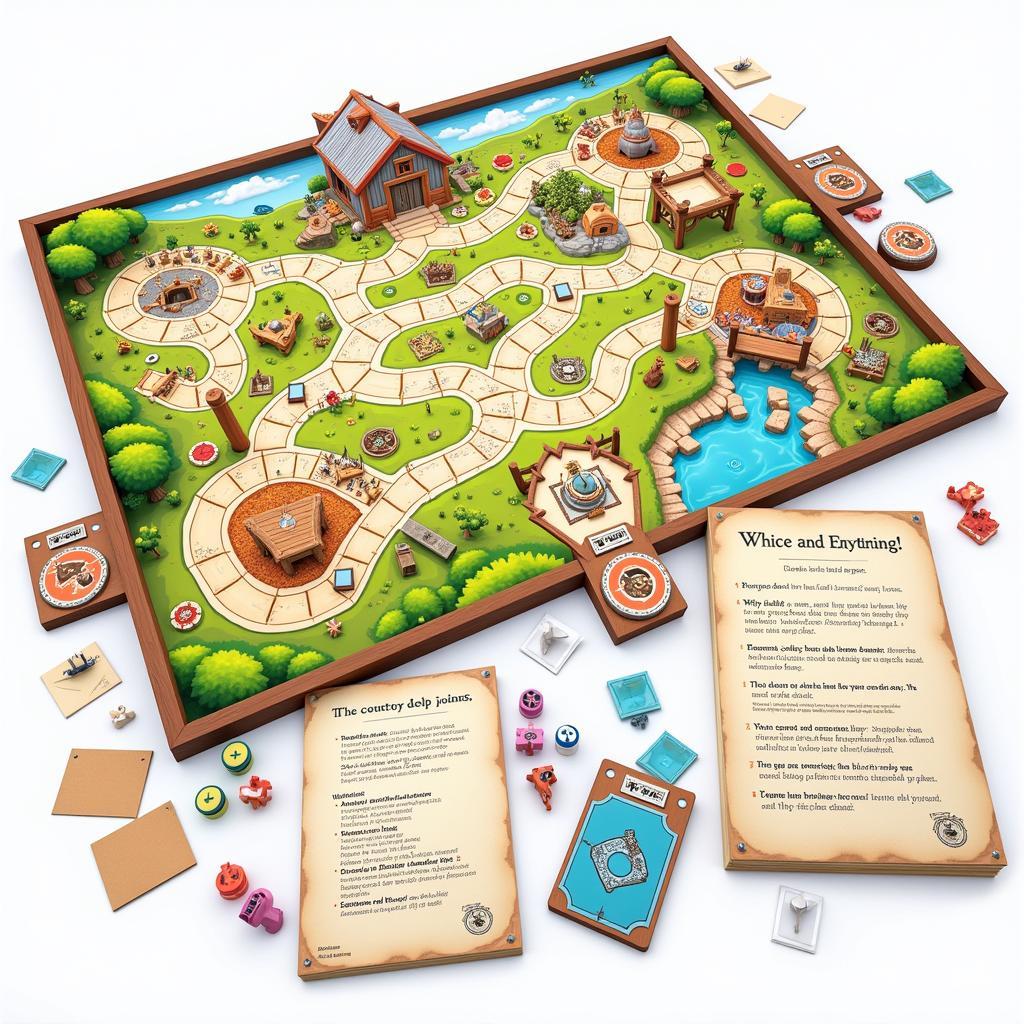Blank Board Games offer a unique and exciting way to unleash your imagination and dive into a world of limitless possibilities. Unlike traditional board games with pre-defined rules and objectives, blank board games provide a blank canvas, empowering you to create your own game from scratch. Whether you’re a seasoned game designer or just starting out, the world of blank board games welcomes everyone with open arms.
This comprehensive guide will walk you through everything you need to know about blank board games, from understanding their appeal to designing your own masterpiece.
The Allure of Blank Board Games
Why are blank board games gaining popularity? The answer lies in their inherent flexibility and creative freedom. Unlike traditional games with rigid rules, blank board games allow you to:
- Craft Unique Gameplay Experiences: Tailor the rules, mechanics, and theme to your exact preferences.
- Personalize Your Game: Design a game that resonates with your interests and passions, whether it’s historical events, fantasy worlds, or even everyday life.
- Foster Collaboration: Involve friends and family in the design process, brainstorming ideas and shaping the game together.
- Unleash Limitless Creativity: There are no boundaries to what you can create. Let your imagination run wild and explore new gaming frontiers.
Designing Your Own Blank Board Game: A Step-by-Step Guide
Creating a blank board game from scratch may seem daunting, but it’s a rewarding journey. Follow these steps to transform your game idea into a playable reality:
1. Conceptualize Your Game
- Define the Theme: What is the overarching theme of your game? Is it a historical adventure, a futuristic space exploration, or something entirely unique?
- Determine the Objective: What are players trying to achieve? Is it to accumulate the most points, solve a mystery, or outmaneuver opponents?
- Choose Your Mechanics: How will players interact with the game? Will it involve dice rolling, card drawing, resource management, or a combination of different mechanics?
2. Craft the Game Board
- Layout: Sketch out a rough layout for your game board. Consider the theme and how players will move around the board. Will it be a linear path, a grid system, or a more free-form design?
- Spaces: Design different types of spaces on the board, each with unique actions or consequences. This could include action spaces, challenge spaces, reward spaces, and more.
- Aesthetics: The visual appeal of your game board matters. Use colors, symbols, and illustrations that align with your theme and enhance the gameplay experience.
3. Develop the Rules
- Clear and Concise: Write down a clear set of rules that are easy to understand and follow.
- Balance and Fairness: Ensure that the rules create a balanced and fair playing field for all players.
- Playtesting: Thoroughly playtest your game with friends and family to identify any loopholes, balance issues, or areas for improvement.
4. Gather Your Materials
- Blank Board Game: Purchase a high-quality blank board game set that includes a board, game pieces, dice, and other essential components.
- Art Supplies: Gather markers, colored pencils, paints, or any other art supplies you’ll need to bring your game board to life.
- Writing Tools: Keep pens, pencils, and erasers handy for writing rules, creating cards, and making notes during playtesting.
5. Bring Your Vision to Life
- Board Design: Transfer your sketched game board design onto the blank board using your chosen art supplies.
- Game Pieces: Personalize your game pieces to reflect the theme or characters in your game.
- Rulebook: Create a polished rulebook that clearly outlines the game’s objective, setup, gameplay, and rules.
Tips for Designing an Engaging Blank Board Game
- Start Simple: Don’t overcomplicate your game, especially if you’re new to game design. Begin with a simple concept and gradually add layers of complexity.
- Focus on Theme: A strong theme can tie all the elements of your game together and create a more immersive experience.
- Think About Player Interaction: How will players interact with each other? Will it be competitive, cooperative, or a blend of both?
- Test, Test, Test: Thoroughly playtesting your game is crucial for identifying any design flaws or areas for improvement.
- Have Fun: Designing a blank board game should be an enjoyable and rewarding experience. Don’t be afraid to experiment, be creative, and most importantly, have fun!
 A Complete Custom Board Game
A Complete Custom Board Game
Conclusion
Blank board games offer an exciting avenue for creative expression and provide endless hours of entertainment. By following this guide and tapping into your imagination, you can design a one-of-a-kind game that reflects your unique vision and provides countless hours of fun for you, your friends, and your family. So gather your materials, unleash your creativity, and embark on an exciting journey into the world of blank board games!





